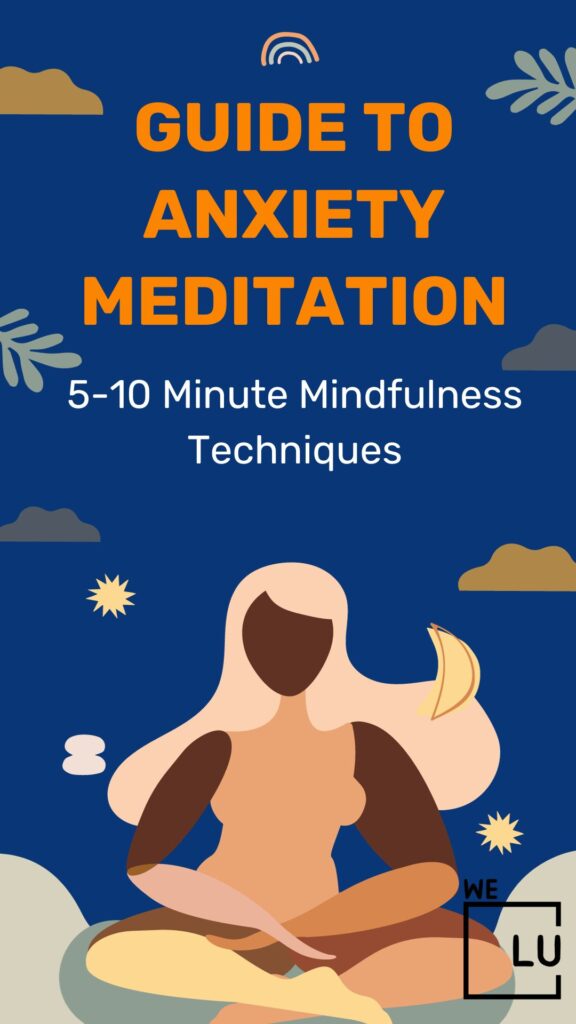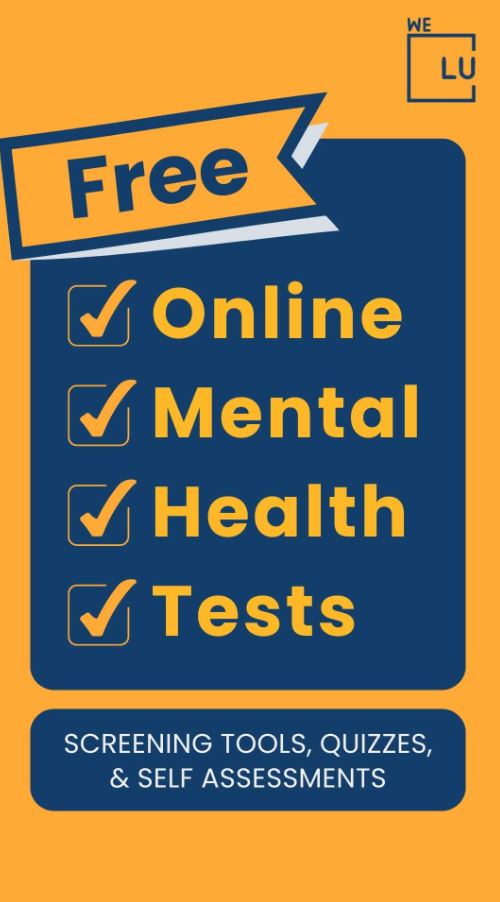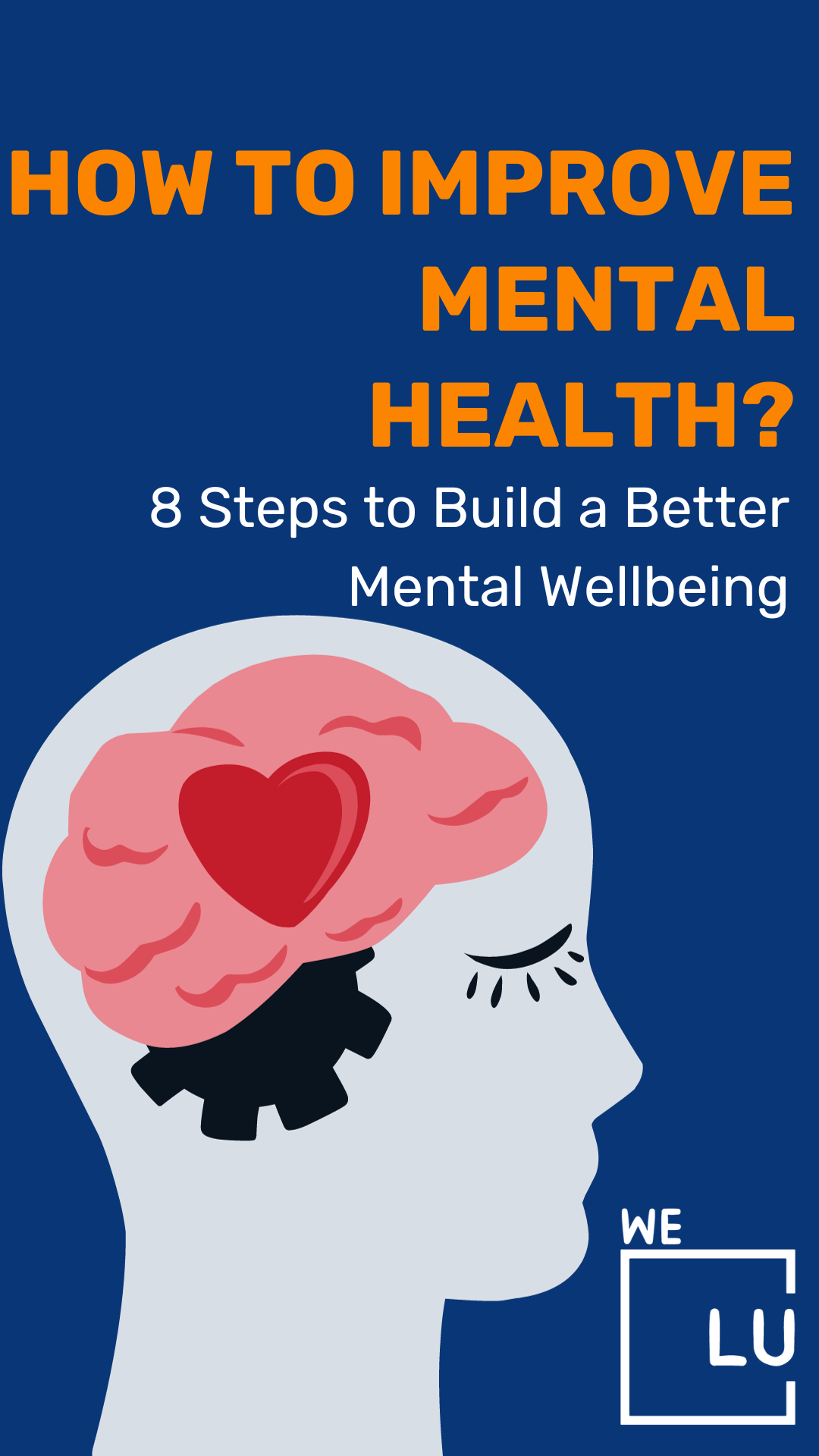Hamilton Anxiety Scale
Please take the following quiz to assess if you are experiencing signs and symptoms of anxiety. Ensure you answer the questions honestly and thoroughly, reflecting your current emotional state rather than how you aspire to feel. It is important to remember that seeking help is always an option, regardless of the time that has passed. Let’s begin with the “Hamilton Anxiety Scale Test” from We Level Up’s treatment center network. Anxiety is an emotion characterized by fear, apprehension, and discomfort. It may lead to symptoms such as sweating, restlessness, tension, and an accelerated heartbeat. This response can be a typical stress reaction. Some common behavioral symptoms of anxiety include:
- Experiencing irritability, tension, or restlessness.
- Insomnia.
- Experiencing palpitations of the heart.
Please complete the free Hamilton Anxiety Scale Test to gain insights into your circumstances. This concise Hamilton Anxiety Scale Test aims to identify behavioral patterns that may indicate a tendency toward anxiety. While it can provide valuable information, it is essential to note that it is not intended as a comprehensive diagnosis or for diagnosing a specific type of anxiety. Depending on your responses, you may receive a potential indication of anxiety. If so, we are here and prepared to offer assistance. However, consulting with a healthcare professional for a clinical diagnosis is crucial. Please feel free to contact us 24/7 with any questions, and rest assured that no obligations are involved.
Take Our Free Hamilton Anxiety Rating Scale Test
Take Our Hamilton Anxiety Scale HAM A Test Online Confidential Results
The Hamilton Anxiety Rating Scale (HAM-A) is a widely used instrument in the field of mental health to assess the severity of anxiety symptoms in individuals. It was developed by Max Hamilton in the late 1950s. The HAM-A consists of 14 items, each representing a different symptom of anxiety. Clinicians use the scale to evaluate the presence and intensity of anxiety symptoms during a clinical interview.
*By taking this free quiz, you may obtain your results online and in your email box. You’ll have the opportunity to opt-in to learn more about your symptoms, talk to a mental health consultant and join our newsletter. Rest assured your information is private and confidential. Results, consultations and assessment are provided without any cost to you and without any obligation. If you do not wish to provide your contact information, you may omit it during your quiz. Thank you for opting in and participating. To you best of health.
What Is The Hamilton Rating Scale For Anxiety?

The Hamilton Rating Scale for Anxiety (HAM-A) is a widely used clinical assessment tool designed to measure the severity of anxiety symptoms in individuals. It was developed by psychiatrist Max Hamilton in the late 1950s and has since become one of the standard instruments for evaluating anxiety disorders in both clinical and research settings.
The HAM-A consists of 14 items, each addressing different aspects of anxiety. These items cover a range of symptoms, including psychological, bodily, and general anxiety features. The clinician conducts a semi-structured interview with the individual, asking specific questions related to the symptoms covered by each item. The responses are then scored to determine the overall level of anxiety.
The items on the HAM-A include assessments of mood, tension, fears, insomnia, intellectual (cognitive) symptoms, depressed mood, behavior at interview, somatic (physical) symptoms, cardiovascular symptoms, respiratory symptoms, gastrointestinal symptoms, genitourinary symptoms, autonomic symptoms, and other general symptoms.
Scores on the HAM-A can range from 0 to 56, with higher scores indicating more severe anxiety. The scale helps clinicians in diagnosing anxiety disorders, assessing the severity of symptoms, and monitoring changes in symptoms over time. It is precious in treatment planning and evaluating the effectiveness of interventions.
It’s important to note that the HAM-A is just one of many tools available for assessing anxiety, and its use may be complemented by other clinical evaluations and patient self-report measures for a comprehensive understanding of an individual’s anxiety symptoms.
The Benefits Of Taking The Hamilton Anxiety Scale Online
Taking the Hamilton Anxiety Scale (HAM-A) online can offer several advantages for both individuals and healthcare professionals:
- Accessibility:
- Online administration of the HAM-A allows individuals to access the assessment from virtually anywhere with an internet connection. This can significantly benefit those with difficulty reaching a physical healthcare facility.
- Convenience:
- Online assessments provide flexibility in terms of timing. Individuals can complete the HAM-A at a time that suits them best, reducing scheduling conflicts and making it more convenient for those with busy schedules.
- Privacy and Comfort:
- Some individuals may feel more comfortable and be more open when responding to sensitive questions about anxiety symptoms in the privacy of their environment. This can contribute to more accurate self-reporting.
- Real-time Monitoring:
- Healthcare professionals can receive real-time data for more immediate and proactive interventions. This can be particularly beneficial in monitoring changes in anxiety symptoms over time and adjusting treatment plans accordingly.
- Reduced Administrative Burden:
- The online format can streamline the data collection process, reducing the administrative burden on healthcare providers. Automated scoring systems can enhance efficiency, allowing professionals to focus more on interpretation and treatment planning.
- Digital Integration:
- Integrating electronic health records and other digital healthcare systems is more straightforward with online assessments. This integration can facilitate a more comprehensive approach to patient care by providing a centralized and organized repository of information.
- Cost-Efficiency:
- Online administration can potentially reduce costs associated with traditional paper-and-pencil assessments. There may be savings regarding materials, administration time, and data entry.
- Remote Monitoring:
- For individuals undergoing remote treatment or telehealth services, online assessments can contribute to a more comprehensive understanding of their anxiety symptoms. Remote monitoring using digital tools can support ongoing care and therapeutic adjustments.
- Data Security:
- While ensuring compliance with privacy regulations, online platforms can implement robust security measures to protect sensitive health information, potentially enhancing the confidentiality of patient data.
It’s essential to ensure that the online platform used for the HAM-A maintains the same level of validity and reliability as the traditional, in-person administration. Additionally, considerations for inclusivity and accessibility should be considered to ensure that the benefits are realized across diverse populations.
Once you have finished answering the Hamilton Anxiety Scale, please submit your responses and wait for the results. Sharing your test results with a professional healthcare counselor or mental health expert is advisable. If you require assistance, feel free to contact the We Level Up treatment center advocates for a complimentary evaluation and consultation regarding anxiety. Rest assured, no obligations are involved, and your call will remain confidential and free of charge.
Get Help. Get Better. Get Your Life Back.
Searching for Accredited Drug and Alcohol Rehab Centers Near You?
Even if you have failed previously and relapsed, or are in the middle of a difficult crisis, we stand ready to support you. Our trusted behavioral health specialists will not give up on you. When you feel ready or just want someone to speak to about therapy alternatives to change your life call us. Even if we cannot assist you, we will lead you to wherever you can get support. There is no obligation. Call our hotline today.
(844) 597-1011Hamilton Anxiety Rating Scale PDF
The Validity Of The Hamilton Anxiety Scale Test
The Hamilton Anxiety Scale (HAM-A) is a widely used tool for assessing the severity of anxiety symptoms, and it has demonstrated good validity. Here are critical aspects of the validity of the HAM-A:
- Content Validity:
- The HAM-A was developed based on expert judgment and clinical experience. The items on the scale cover a comprehensive range of anxiety symptoms, including both psychological and physical aspects. This contributes to the scale’s content validity, ensuring it assesses the full spectrum of anxiety-related issues.
- Construct Validity:
- Studies have supported the construct validity of the HAM-A by demonstrating its ability to accurately measure the underlying construct it intends to assess—namely, the severity of anxiety. The scale distinguishes between individuals with varying degrees of anxiety symptoms, supporting its use in clinical diagnosis and research.
- Convergent and Divergent Validity:
- Convergent validity is supported when the HAM-A correlates positively with other measures of anxiety severity, indicating that it converges with similar constructs. Divergent validity is supported when the scale does not correlate strongly with measures assessing unrelated constructs. Evidence suggests that the HAM-A shows good convergent and divergent validity.
- Criterion-Related Validity:
- The HAM-A has demonstrated good criterion-related validity by correlating with other established measures of anxiety. This includes correlations with self-report measures and other clinician-administered assessments, supporting its ability to predict anxiety severity.
- Sensitivity to Change:
- The HAM-A is sensitive to changes in anxiety symptoms over time. This sensitivity makes it a valuable tool for assessing the effectiveness of interventions and treatment outcomes. Changes in HAM-A scores often reflect improvements or worsening of anxiety symptoms.
- Discriminant Validity:
- Discriminant validity refers to the scale’s ability to differentiate between individuals with anxiety disorders and those without. The HAM-A has demonstrated good discriminant validity by distinguishing between clinical and non-clinical populations.
Skip To:
Learn More:
- 7 Signs of High Functioning Anxiety, Symptoms & Causes. High Functioning Anxiety Treatment.
- Lexapro vs Zoloft for Anxiety, Which is Better For You? Lexapro vs Zoloft Weight Gain. Switching From Zoloft to Lexapro.
- PMDD Test, Do I Have Premenstrual Dysphoric Disorder?
- Free Online Psychosis Test, Confidential Results
- Agoraphobia Test, Symptoms & Signs Of Agoraphobia
- Emotional Abuse Test, Am I In An Abusive Relationship? Emotionally Abusive Relationship Test
- Free Online Drug And Alcohol Tests, Quizzes, & Assessments
- Free CIWA Score Assessment Quiz, CIWA-Ar for Withdrawal
- How Do I Know If I Have CHS Quiz? Free CHS Diagnosis Quiz. How To Make CHS Go Away?
- Do I Have Schizophrenia Quiz? Easy, Free, & Confidential
While the HAM-A has several strengths in terms of validity, it’s essential to consider that no assessment tool is perfect. The validity of the HAM-A may vary depending on factors such as the population being assessed and the specific context of use. Clinicians may also consider combining information from multiple sources, including self-report measures and clinical interviews, for a more comprehensive assessment of anxiety symptoms.
Hamilton Rating Scale Anxiety Treatment
The Hamilton Rating Scale for Anxiety (HAM-A) is primarily a diagnostic tool used to assess the severity of anxiety symptoms rather than a treatment guide. However, the information gathered from the HAM-A can inform treatment decisions by helping clinicians tailor interventions to the specific needs and severity of the individual’s anxiety.
Here are common approaches to treatment based on the assessment using the HAM-A:
- Psychotherapy:
- Cognitive-Behavioral Therapy (CBT): CBT is a well-established therapeutic approach for anxiety disorders. It helps individuals identify and modify irrational thoughts and behaviors contributing to anxiety.
- Exposure Therapy: This involves gradually exposing individuals to anxiety-provoking situations in a controlled manner to reduce their fear and avoidance.
- Medication:
- Antidepressants: Selective serotonin reuptake inhibitors (SSRIs) and serotonin-norepinephrine reuptake inhibitors (SNRIs) are often prescribed for anxiety disorders. Benzodiazepines may be used for short-term relief but are typically avoided for long-term use due to the risk of dependence.
- Buspirone: An anti-anxiety medication that may be used for generalized anxiety disorder.
- Lifestyle and Coping Strategies:
- Stress Management: Techniques such as mindfulness, relaxation exercises, and deep breathing can help manage stress and anxiety.
- Regular Exercise: Physical activity is associated with improvements in mood and can help alleviate anxiety symptoms.
- Supportive Interventions:
- Support Groups: Group therapy provides a supportive environment where individuals with similar experiences can share coping strategies and offer mutual support.
- Family Therapy: Involving family members in therapy can help improve understanding and support for individuals with anxiety disorders.
- Education and Psychoeducation:
- Psychoeducation: Providing information about anxiety disorders, their causes, and effective treatments can empower individuals to manage their symptoms.
- Self-Help Resources: Recommending self-help books, online resources, or apps that offer tools and techniques for managing anxiety.
- Regular Monitoring and Adjustments:
- Regular follow-up assessments using tools like the HAM-A can help clinicians monitor treatment progress and make adjustments as needed.
It’s important to note that treatment plans should be individualized based on the specific needs and preferences of the person with anxiety. Collaboration between the individual, mental health professionals, and, when applicable, family members is crucial for successful treatment outcomes. Additionally, a comprehensive assessment, including a thorough clinical evaluation, is necessary to guide the selection of appropriate interventions.
Anxiety Facts
Anxiety Overview
Your brain and behavior are both impacted by the condition of addiction. Substance addiction makes it unable to resist the impulse to use the drug, regardless of how harmful it may be. The sooner you receive treatment for drug addiction, the better your chances are of avoiding some of the disease’s more severe side effects.
Anxiety Symptoms
Behavioral: hypervigilance, irritability, or restlessness.
Cognitive: lack of concentration, racing thoughts, or unwanted thoughts.
Whole body: fatigue or sweating.
Also common: anxiety, excessive worry, angor animi, fear, insomnia, nausea, palpitations, or trembling.
Anxiety Treatment
- Support group: A place where those pursuing the same disease or objective, such as weight loss or depression, can receive counseling and exchange experiences.
- Cognitive behavioral therapy: A conversation treatment that aims to change the negative attitudes, actions, and feelings connected to psychiatric discomfort.
- Counseling psychology: A subfield of psychology that handles issues with the self that are connected to work, school, family, and social life.
- Anger management: To reduce destructive emotional outbursts, practice mindfulness, coping skills, and trigger avoidance.
- Psychoeducation: Mental health education that also helps individuals feel supported, validated, and empowered
- Family therapy: psychological counseling that improves family communication and conflict resolution.
Anxiety Statistics
Anxiety is a common mental health condition characterized by excessive worry, fear, and apprehension. It can manifest in various forms, such as generalized anxiety disorder (GAD), panic disorder, social anxiety disorder, and specific phobias. Anxiety can significantly impact a person’s daily life, relationships, and well-being.
264 million
Anxiety disorders are among the most common mental health conditions worldwide, affecting a significant portion of the population. An estimated 264 million people globally were living with anxiety disorders in 2017.
Source: WHO
50%
Anxiety and depression often coexist. It is reported that approximately 50% of individuals diagnosed with an anxiety disorder are also diagnosed with depression at some point in their lives.
Source: ADAA
$42 billion
The economic costs associated with anxiety disorders are substantial. Anxiety disorders cost more than $42 billion annually in healthcare expenses and lost productivity in the United States.
Source: Journal of Clinical Psychiatry
How to Improve Mental Health? 8 Steps & Tips for Maintaining Your Mental Wellbeing
Video Script
8 Steps for Mental Wellbeing & How To Improve Mental Health In The Workplace
- Staying Positive.
- Practicing Gratitude.
- Taking Care of Your Physical Health.
- Connecting With Others.
- Developing a Sense of Meaning and Purpose in Life.
- Developing Coping Skills.
- Meditation.
- Relaxation Techniques.
Search We Level Up Hamilton Anxiety Scale & Recovery Resources
Sources
- [1] NCBI – Heslin KC, Elixhauser A, Steiner CA. Hospitalizations Involving Mental and Substance Use Disorders Among Adults, 2012. 2015 Jun. In: Healthcare Cost and Utilization Project (HCUP) Statistical Briefs [Internet]. Rockville (MD): Agency for Healthcare Research and Quality (US); 2006 Feb-. Table 3, https://www.ncbi.nlm.nih.gov/books/NBK310986/table/sb191.t3/ tags: high functioning autism and anxiety
- [2] NCBI – https://pubmed.ncbi.nlm.nih.gov/22751995/ – mental health inpatient facility near me – Lee S, Rothbard AB, Noll EL. Length of inpatient stay of persons with serious mental illness: effects of hospital and regional characteristics. Psychiatr Serv. 2012 Sep 1;63(9):889-95. doi: 10.1176/appi.ps.201100412. PMID: 22751995.
- [3] Depression Treatment » Drug Alcohol Addiction Rehab tags: Therapist Fort Lauderdale
- [4] Bandelow B, Michaelis S, Wedekind D. Treatment of anxiety disorders. Dialogues Clin Neurosci. 2017 Jun;19(2):93-107. doi: 10.31887/DCNS.2017.19.2/bbandelow. PMID: 28867934; PMCID: PMC5573566. tags: high functioning anxiety signs
- [5] NIMH – https://www.nimh.nih.gov/health/publications/social-anxiety-disorder-more-than-just-shyness tags: Therapist Fort Lauderdale
- [6] Selective Serotonin Reuptake Inhibitors – National Center for Biotechnology Information, U.S. National Library of Medicine tags: highly functioning anxiety
- high functioning social anxiety[7] ‘Anxiety Disorders’ – National Institute Of Mental Health (Nimh.nih.gov) high functioning depression and anxiety
- [8] Psychopharmacology of anxiety disorders – National Center for Biotechnology Information, U.S. National Library of Medicine signs of high-functioning anxiety in adults
- [9] Products – Data Briefs – Number 379 – September 2020 (cdc.gov) Depression – National Institute of Mental Health the sneaky signs of high-functioning anxiety
- [10] Coping with Stress – Centers for Disease Control and Prevention


